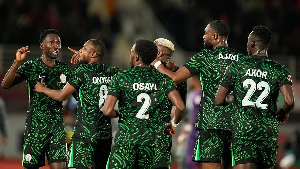Short-term solutions and expediencies, implemented on a day-to-day basis, have not yet provided the answers. Could it be that any long-term solution lies within the context of environmental education? Decisions concerning the standard and quality of life are in the main political decisions. Are these decisions evaluated? What assessment procedures can the electorate adopt? At the present time the politics is too often that of vested interest and pressure groups. To be able to move away from such a situation requires a well-informed and environmentally-literate society.
…Charles Evans Hughes
Revered American jurist
My participation at the just concluded annual lecture of the “Medical Students’ Association (MSA) of KNUST” spurred me to do this write-up. A representative from the Ministry of Local Government, Rural Development & Environment (MLGRDE) informed the participants that the ministry is on track to re-introduce the disbanded environmental health officers, popularly known as “Tankassi” or “Sama-sama”. One of the reasons for their re-introduction, he cited, was the worsening sanitation situation in the country. The abolition of the Tankassi system ushered in the era of public environmental education. But let me state categorically that we did not achieve a hundred percent efficiency with the public education system before choosing to return to the Tankassi system. The following attest to my fact:
1. The ten-year period of 1991-2000 is a good case point. For this period, we as a nation, intended to incorporate environmental education into the syllabus of our first and second-cycle institutions, which was not successful.
2. Unless we reinforce to build up what we have lost, inferentially, in the next 10-15 years our educated populace would to a large extent, be environmentally uneducated.
3. Underutilization of rain-water harvesting systems as a freshwater conservation tool as well as for irrigation agriculture thereby worsening food insecurity problems. Perhaps, if part of goal of environment l education is to educate citizens on resource conservation methods, then a related goal should be the conservation of the most important environmental resource—water. To achieve a greater efficiency with this second-phase of public education, I would advocate Ogunleye’s two-theory model, which are:
i) The psychodynamic model of communication
The psychodynamic model suggests that suggests that achieving effectiveness in programming alters the psychological functioning of the audience, making its members more receptive to the behavior advocated by the communicator. This requires that for whatever mass media used by the communicator (be it the electronic or print media), the time must be right for the message to be heard. The concept of designing programmes based on developmental level, cultural heritage and learning style rests in teaching what is of use and interest to them when they are capable of understanding and using it.
Havighurst’s “teachable moment” illustrates this point. The “teachable moment” is when the ready, when society requires it and the self is ready to achieve a certain task. Let me give a case point: For the current Greening Ghana Initiative (GGI), the communication mechanism must be positioned to convince Ghanaians on the need to plant a tree. The advertorial made on newspaper (about the GGI) could capture a fraction of the literate reading class of society but further grassroot action is needed to encourage the unreading literate and illiterate segment of society to be ‘psychologically convinced’ to be part of the process.
For instance, the successes achieved by the Negro community of the United States under the leadership of Dr. Martin Luther King Jr. were achieved using this psychodynamic model of communication, which include:
a) Non-violence appeal to conscience and
b) Non-violent direct action
Using this model, Dr. Martin Luther was able to, firstly, through persuasive meetings with the people convinced them to accept the use of courage, non-injury and moral principles (non-violence) to lead the battle to free themselves from the slavery of marginalization and discrimination. Having being convinced, they were able to move for action. The Norwegian committee on Nobel Peace Prize recognized this model by awarding him the prize in 1964. This model can also work for Ghana’s environmental consciousness if we really believe and practice it.
ii) The value change theory
The value change theory demands from the citizenry, on one hand, to access the pre-education behavior with the post-education behavior. On the other hand, the citizenry should access the behavior of others against those of themselves. This could be done through periodical seminars where resource persons in the field could self-evaluation tests, self-assessment tests, self-improvement tests, etc. and document the result for national record.
Projected Human Behaviour Outcome:
As shown above, if there is high effectiveness in order to accomplish this two-theory model, then we would achieve a functionally-literate society, who would commit themselves to life-service to the environment rather than the ‘dominant carrot-and-stick lip-service syndrome’. Ogunleye (2003) emphasizes that there is a worldwide call for functional literacy, especially the type that can be applied to the practical matters of everyday life. Part of this functional literacy should be concerned with the environmental education. It may well be that this functional literacy outcome may serve the purpose of Nana Akuoko Sarong in his advocacy that the Volta River Authority (VRA) should channel their efforts towards tree-planting along the banks of Lake Volta to respond to the problem of excessive evapouration, which indirectly affects the Akosombo Dam.
It is no surprise that the onus of the advocacy lies in environmental education.
Reinforcing the Tankassi System:
It was revealed at this lecture that of the five percent of the “Common Fund” allotted to the Ministry for environmental protection, about fifteen percent is being spent solely on sanitation.
I want to suggest what these funds can be used to do in order to realize a safe, secure and sound environment, thus:
1. Provision of waste disposal equipments and gadgets for environmental monitoring and protection. It is crystal clear that one of the factors militating against quality environment is the lack of sufficient and appropriate waste disposal and management systems. The example of Lagos State Government is particularly germane. The Lagos State Environmental Protection Agency (EPA) introduced two colours of refuse disposal bags to the public. Black bags are used to pack biodegradable waste while the other colour is used to pack non-biodegradable waste (Ogunleye 2002:157). Using media programmers, the Lagos EPA carried out awareness programme on both television and radio, which informed the citizens about where to obtain the bags and to dispose the refuse, which in consequence built the habit of bagging waste. Ghana can achieve a similar feat by following the example of Laos State EPA.
2. Running an Environmental Management System (EMS) for the Tankassi officers in order to equip them with the tool-set and skill-set required for monitoring and inspection of small-scale and medium-scale businesses. An instance is this: some local bread-making industries who use car tires to generate heat needed for the bread should be stopped by the Tankassi officers. The Tankassi should be enhanced and mainstreamed to become a local regulatory body—able to deal with mobile food vendors such as those engaged in unhealthy preparation of foods that endanger the health of the public.
3. Motivation
One of the reasons for the disillusionment of the earlier Tankassi officers was the poor state of their working condition considering the salary, benefits and other extraordinary benefits not accruing to them. The Tankassi should be paid well to keep them on the job so that their lifestyle is enhanced thereby demystifying the social stigma attributed to them by society.
Conclusion:
Sequel to a recent ‘Environmental Education’ research carried out at the University of Durham, England, it has been convincingly proved that environmental education is directly related to environmental care, protection and sanitation. However we need the two arms of education and enforcement of legislation in order to achieve this goal of clean environment. Finally, I would advocate to the Ministry of Local Government, Rural Development and Environment to use both systems of “public environmental education” and “Tankassi” to solve the sanitation problem of Ghana. I trust that the suggestions given here would help to achieve this plan.















